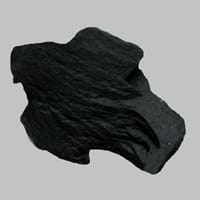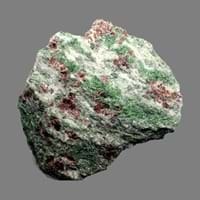Definition
Lignite is a soft brownish coal which shows traces of plants and is intermediate between bituminous coal and peat
Eclogite is an extreme metamorphic rock, formed by regional metamorphism of basalt rock under very high pressure and temperature
Discoverer
Unknown
René Just Haüy
Etymology
From French, Latin lignum wood + -ite1
From French, Greek eklogē selection with reference to the selective content of the rock + -ite1
Class
Sedimentary Rocks
Metamorphic Rocks
Sub-Class
Durable Rock, Soft Rock
Durable Rock, Medium Hardness Rock
Group
Not Applicable
Not Applicable
Other Categories
Coarse Grained Rock, Fine Grained Rock, Medium Grained Rock, Opaque Rock
Fine Grained Rock, Opaque Rock
Texture
Amorphous, Glassy
Earthy
Color
Black, Brown, Dark Brown, Grey, Light to Dark Grey
Black, Brown, Colourless, Green, Grey, Pink, White
Durability
Durable
Durable
Appearance
Veined or Pebbled
Dull, Banded and Foilated
Interior Uses
Not Yet Used
Decorative Aggregates, Interior Decoration
Exterior Uses
Not Yet Used
Paving Stone, Garden Decoration
Other Architectural Uses
Not Yet Used
Curbing
Construction Industry
for Road Aggregate, Steel Production
Not Yet Used
Medical Industry
Not Yet Used
In Chemical and Pharmaceutical Industry, Medicines and Cosmetics
Antiquity Uses
Not Yet Used
Artifacts
Commercial Uses
Electricity Generation
Creating Artwork, Gemstone
Types
Xyloid Lignite or Fossil Wood and Compact Lignite or Perfect Lignite
Not Available
Features
Generally rough to touch, Helps in production of Heat and Electricity, Used as fossil fuel
Available in Lots of Colors and Patterns, Generally rough to touch, Is one of the oldest rock
Archaeological Significance
Monuments
Not Yet Used
Not Yet Used
Famous Monuments
Not Applicable
Not Applicable
Sculpture
Not Yet Used
Not Yet Used
Famous Sculptures
Not Applicable
Not Applicable
Figurines
Not Yet Used
Not Yet Used
Formation
Coal formation takes place due to accumulation of plant debris in a swamp environment. The Coal formation process continues, as peat turns into lignite brown or black coal at increasing heat and pressure.
Eclogite forms from high-pressure metamorphism of mafic igneous rocks mainly, basalt or gabbro as it plunges into the mantle in a subduction zone.
Mineral Content
Not Available
Amphibole, Coesite, Corundum, Dolomite, Garnet, Kyanite, Lawsonite, Paragonite, Phengite, Pyroxene, Quartz, Rutile, Zoisite
Compound Content
Carbon, Hydrogen, Nitrogen, Oxygen, Sulphur
Aluminium Oxide, NaCl, CaO, Carbon Dioxide, Iron(III) Oxide, Magnesium Carbonate, MgO, Sodium Oxide, Potassium, Sodium
Types of Metamorphism
Not Applicable
Not Applicable
Types of Weathering
Biological Weathering, Chemical Weathering, Mechanical Weathering
Mechanical Weathering
Types of Erosion
Chemical Erosion, Water Erosion, Wind Erosion
Chemical Erosion, Sea Erosion
Grain Size
Medium to Fine Coarse Grained
Fine Grained
Fracture
Conchoidal
Not Available
Porosity
Highly Porous
Less Porous
Luster
Dull to Vitreous to Submetallic
Subvitreous to Dull
Cleavage
Non-Existent
Perfect
Toughness
Not Available
Not Available
Specific Gravity
1.1-1.4
2.86-2.87
Transparency
Opaque
Opaque
Density
800-801 g/cm3
3.2-3.6 g/cm3
Specific Heat Capacity
Not Available
Resistance
Heat Resistant
Heat Resistant
Deposits in Eastern Continents
Asia
Bangladesh, Burma, Cambodia, China, India, Indonesia, Kazakhstan, Malaysia, Mongolia, Pakistan, Turkey, Vietnam
India, Kazakhstan, Kuwait, Russia, South Korea, Thailand, Turkey
Africa
Botswana, Kenya, Morocco, Mozambique, South Africa, Tanzania
Ethiopia, Morocco, South Africa
Europe
Belgium, Bulgaria, England, France, Germany, Greece, Hungary, Kosovo, Netherlands, Norway, Poland, Romania, Serbia, Slovakia, Slovenia, The Czech Republic, Ukraine, United Kingdom
France, Germany, Italy, Norway, Scotland
Others
Not Yet Found
Greenland
Deposits in Western Continents
North America
Canada, Mexico, USA
Canada, Costa Rica, Panama, USA
South America
Brazil, Chile, Colombia, Venezuela
Argentina, Brazil, Colombia, Ecuador
Deposits in Oceania Continent
Australia
New South Wales, Queensland, Victoria
Central Australia, New Zealand, Queensland










